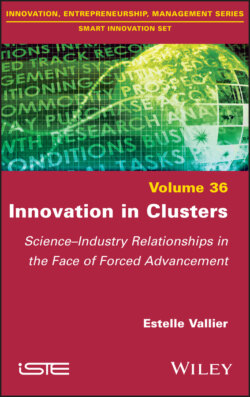Читать книгу Innovation in Clusters - Estelle Vallier - Страница 11
I.1.3. Focusing on biotechnologies: catching up with the world through clustering
ОглавлениеThis book is particularly concerned with the contextualization and clustering of the life sciences. A major turning point for the life sciences occurred in the 1980s in the United States with the passage of the Bayh-Dole Act, which allowed universities to patent publicly funded research (Gaudilliere and Joly 2006). The patenting of life forms has thus played an important role in bringing together the life sciences and their technological application, commonly known as biotechnology. This is understood as “a set of procedures implementing biological knowledge for a transformation of the living body: gene therapy, cloning, genetic modification of organisms, etc.” (Keck 2003, p. 182). It is identified as a field with a high technological potential, capable of “irrigating large areas of the economy” (Branciard 2004, p. 10), its aim being to make living organisms a factor of production like any other. Since 1983, the Ministry of Research has notably been one of the institutions involved in promoting biotechnology through organizations such as the National Scientific Research Centre (Centre national de la recherche scientifique, CNRS), the Atomic Energy Commission (Commissariat à l’énergie atomique, CEA), the National Agronomic Research Institute (Institut national de la recherche agronomique, INRA), the National Health and Medical Research Institute (Institut national de la santé et de la recherche médicale, INSERM), universities, foundations, etc. In addition to the creation of a national committee on these issues (the “biotechnology boom” program)13, the state committed itself to promoting biotechnology on October 17, 1990. Hubert Curien, Minister of Research at the time, launched the National Human Genome Program in the Council of Ministers (Guthleben and Faou 2011). The aim was to set up a coordinated strategy with all the laboratories and institutes already involved in biological research on the genome. The program also aims to coordinate cooperation with the United States around the Human Genome Project, which aims to establish complete DNA sequencing.
Biotechnology generally refers to health-related production processes, but in reality, it covers other industrial sectors, primarily biopharmaceuticals (therapeutic products, diagnostics, medical devices, etc.) and the biofood sector (Heil 2010, p. 240). The former comprises two types of actors: small innovative firms often originating from academia (spin-offs) which, in most cases, once the fundamental research has been completed, are bought out by “big pharma”, which takes over the costly processes of the clinical phase, production and marketing. The latter addresses human nutrition, agriculture and the environment (production of food based on microalgae, detection of plant pathogens, biorefining, detection of pollutants from modified living organisms, etc.).
Biotechnology assumes both a strong academic base and interaction with the medical and industrial worlds (pharmaceuticals, therapies, agrifood, agrochemicals, environment, bioenergy). It is therefore positioned between a world that guarantees diversity (academic research) and another whose challenges, conversely, relate to standardization (medical and/or industrial application) (Branciard 1999, p. 3).
In order to resolve this conflict between standardization and the maintenance of diversification, public action mechanisms create conditions for the coming together of laboratories, universities, companies and equipment in localized spaces (biotechnology clusters or bioclusters). The cost of equipment, in particular, would explain the need for agglomerated networks in the case of biotechnology, in order to pool vital, cutting-edge instruments (Aggeri et al. 2007b, p. 202). Finally, the dominant argument in the 1990s was that there was too great a gap between scientific production in the life sciences and its commercialization, which was reflected in an insufficient number of start-ups and patent applications. Particularly in the case of biotechnology, the rhetoric is as follows: “The articulation of science with industry is not self-evident: a forcing seems necessary” (Brunet 2011, p. 2). From then on, bringing together two worlds that ignore each other requires incentives and, in particular, the creation of an intermediation structure between science and industry.
